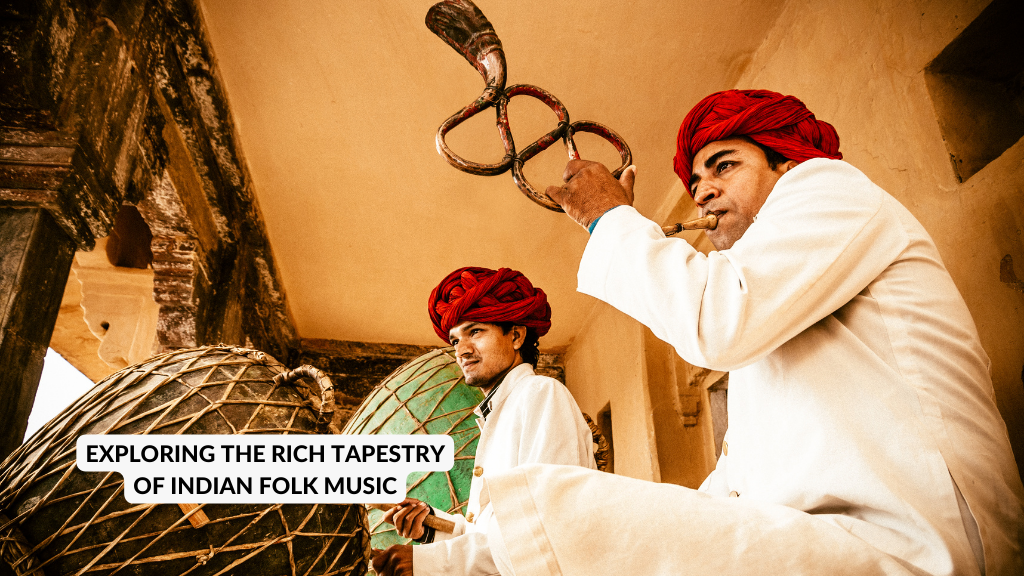India has diverse music styles, with folk music standing out as a vivid expression of cultural heritage and community traditions. From the green valleys of Assam to the sun-soaked plains of Bengal, the country’s folk music traditions provide a glimpse into the heart and soul of its people.
Diverse Regional Traditions
India has diverse folk music traditions that vary across regions based on the communities’ customs, languages, and landscapes. In Assam, the rhythmic beats of Bihu music are attended by vibrant dance performances during the Bihu festival that celebrates the arrival of spring with infectious energy and joy.
In the region of Bengal, the soulful melodies of Baul’s music resonate with themes of love, spirituality, and mysticism. Bauls, who are wandering minstrels and mystics, sing about divine love and inner awakening. Their music transcends earthly boundaries and touches the hearts of listeners with its profound simplicity.
Cultural Heritage and Tradition
Culture music is a testament to India’s rich cultural heritage and centuries-old traditions. These songs are passed down orally from one generation to the next and depict tales of heroism, love, and everyday life. They help preserve the essence of community identity and shared experiences.
Folk music traditions reflect each region’s unique ethos. A few examples are the poignant ballads of Rajasthan’s Manganiar musicians, Punjab’s Bhangra music, and Kerala’s boat songs.
Celebrating Diversity and Unity
India is home to a diverse range of folk music traditions, but they all share a common bond and a strong sense of community and belonging. People gather to celebrate festivals, weddings, and other social events through music and dance, forming deep friendships and bonds that transcend differences in caste, creed, and language.
Preserving and Promoting Folk Music
In recent years, concerted efforts have been made to preserve and promote India’s rich heritage of folk music. Cultural organisations, music festivals, and government initiatives have provided folk musicians with platforms to display their talents and reach wider audiences, ensuring that India’s rich musical traditions continue to thrive in the modern world.
Conclusion
Indian music is a wonderful representation of the country’s diverse cultures, artistic expressions, and communal harmony. It consists of a wide range of enchanting melodies that can be heard from the Himalayan hills to the Indian Ocean shores, capturing the essence of the nation’s cultural heritage. The music is a beautiful blend of traditional and modern elements woven together to create a rich tapestry of emotions and sounds.

